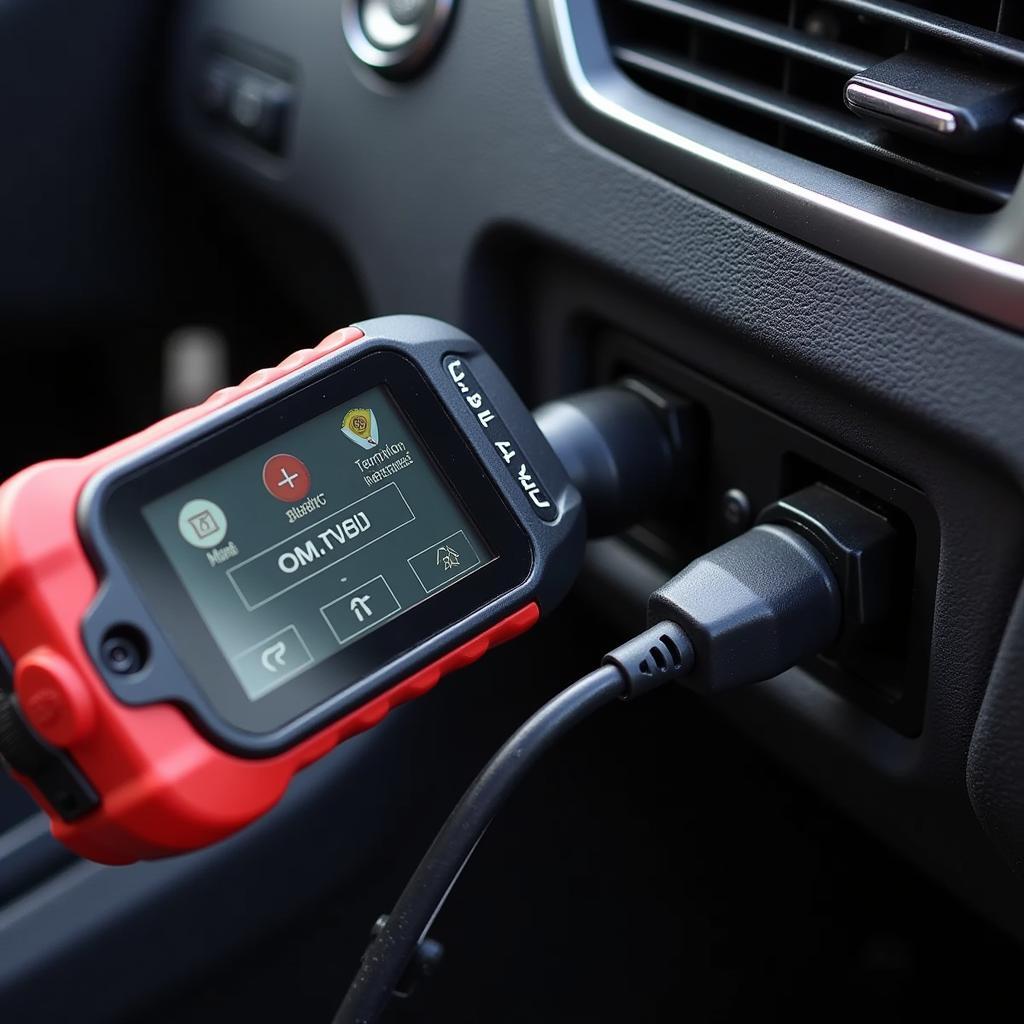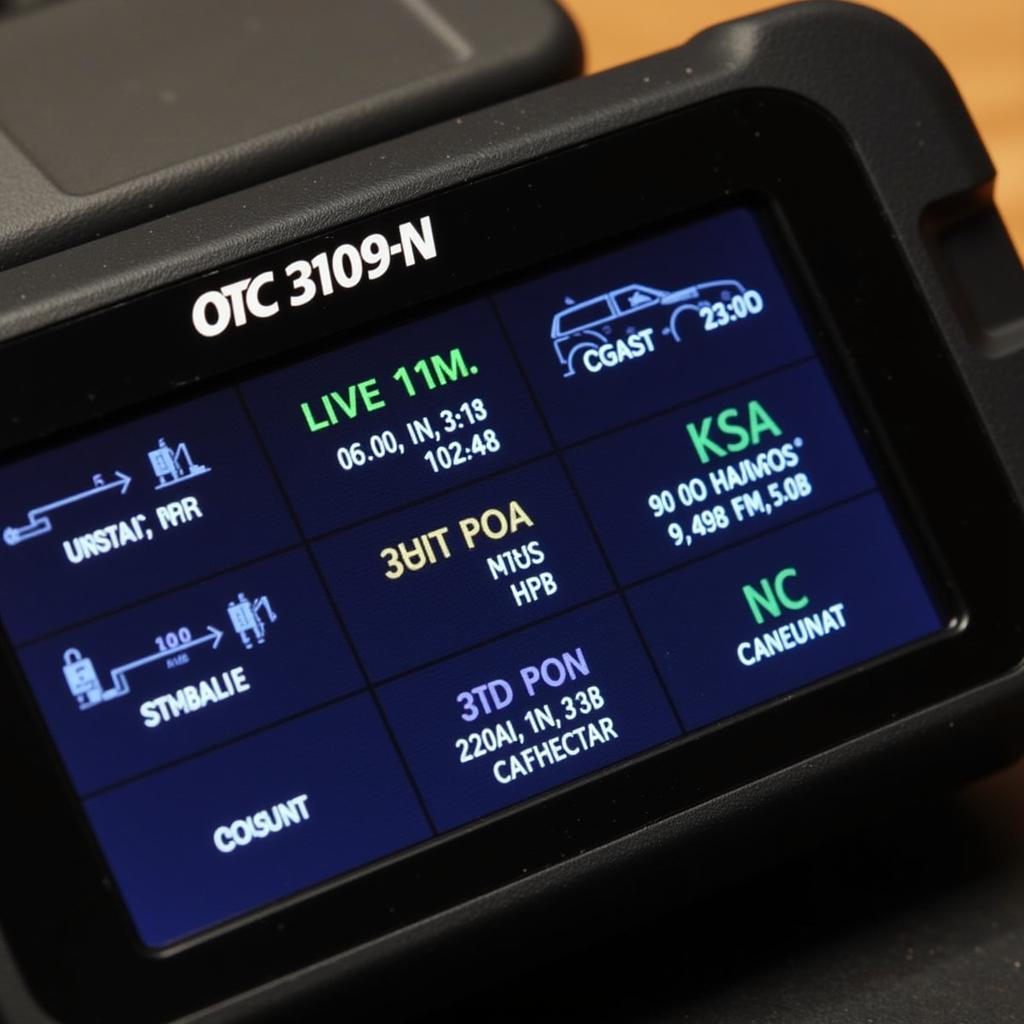Car Diagnostic Scanner Codes are essential for troubleshooting vehicle issues. These codes, displayed on an OBD-II scanner, provide valuable insights into the inner workings of your car’s systems, enabling faster and more accurate diagnoses. Whether you’re a car owner, a mechanic, or a technician, understanding these codes is crucial for efficient vehicle maintenance and repair. You might need a vgate obd scan tool software to effectively interpret these codes.
Decoding the Secrets of Car Diagnostic Scanner Codes
Diagnostic Trouble Codes (DTCs), more commonly known as car diagnostic scanner codes, are alphanumeric codes that signify specific malfunctions within a vehicle’s systems. These codes are standardized by the Society of Automotive Engineers (SAE) to ensure consistency across different makes and models. The codes themselves are like a secret language spoken by your car, and a diagnostic scanner acts as your translator.
Imagine your car’s check engine light illuminates. Instead of playing a guessing game, a car diagnostic scanner can pinpoint the source of the problem. By plugging the scanner into your car’s OBD-II port, you can retrieve these codes and understand what’s happening under the hood. This knowledge empowers you to address the issue directly, saving time and potentially costly misdiagnoses.
 Car Diagnostic Scanner Plugged into OBD Port
Car Diagnostic Scanner Plugged into OBD Port
Types of Car Diagnostic Scanner Codes
There are several types of car diagnostic scanner codes you might encounter. Understanding the difference between these types helps to prioritize and address issues effectively.
- P Codes (Powertrain): These codes relate to the engine, transmission, and associated emissions systems.
- B Codes (Body): These codes refer to problems with the body electronics, such as power windows, airbags, and central locking.
- C Codes (Chassis): These codes deal with issues related to the chassis, including anti-lock brakes, steering, and suspension.
- U Codes (Network): These codes indicate problems with the vehicle’s communication network, which can affect various systems.
For specific vehicle diagnostics, you might need a specialized tool like a car diagnostic scanner usb cable for gm.
How to Use a Car Diagnostic Scanner
Using a car diagnostic scanner isn’t rocket science. Here’s a simple step-by-step guide:
- Locate the OBD-II port: Typically found under the dashboard on the driver’s side.
- Plug in the scanner: Connect the scanner to the OBD-II port.
- Turn on the ignition: Turn the key to the “on” position without starting the engine.
- Read the codes: The scanner will display any stored DTCs.
- Interpret the codes: Use a reliable resource to understand the meaning of each code.
- Address the issue: Take appropriate action to fix the problem.
- Clear the codes: Once the repair is complete, clear the codes using the scanner.
Common Car Diagnostic Scanner Codes and Their Meanings
While there are thousands of possible codes, some appear more frequently than others. Here are a few examples:
- P0420 (Catalyst System Efficiency Below Threshold): Often indicates a failing catalytic converter.
- P0300 (Random/Multiple Cylinder Misfire Detected): Can be caused by various issues, from spark plugs to fuel injectors.
- P0171 (System Too Lean (Bank 1)): Suggests a problem with the air-fuel mixture.
Advanced Diagnostics with Car Diagnostic Scanners
Beyond simply reading codes, some advanced scanners offer additional functionalities, such as live data streaming, which can provide real-time insights into sensor readings and system performance. These advanced features are invaluable for diagnosing complex issues and monitoring the effectiveness of repairs. A best obdii car diagnostic scanner will offer a range of features to help you troubleshoot car problems.
“Using a car diagnostic scanner is like having an X-ray vision into your car’s health,” says Robert Johnson, a seasoned automotive engineer. “It removes the guesswork and allows for targeted repairs, saving both time and money.”
Importance of Accurate Code Interpretation
Accurate code interpretation is critical. While scanners retrieve the codes, they don’t always provide the definitive diagnosis. Further investigation is often needed to pinpoint the exact cause of the problem. Misinterpreting a code can lead to unnecessary repairs and wasted resources.
The Future of Car Diagnostic Scanner Codes
With the increasing complexity of modern vehicles, the role of car diagnostic scanner codes is only going to become more significant. The future will likely see more sophisticated scanners with enhanced functionalities, integrating with cloud-based databases and even offering predictive diagnostics. If you’re looking for a versatile option, consider a trilingual obd ii eobd & can scan tool.
“The evolution of car diagnostic scanners mirrors the advancement of automotive technology itself,” adds Emily Carter, a leading automotive software developer. “These tools are essential for staying ahead of the curve in vehicle diagnostics and repair.”
Conclusion
Car diagnostic scanner codes are an indispensable tool for understanding and resolving vehicle issues. From simple code retrieval to advanced diagnostics, these tools empower car owners, mechanics, and technicians to address problems effectively. Mastering the art of interpreting these codes is crucial for efficient vehicle maintenance and repair in today’s automotive landscape. Contact ScanToolUS at +1 (641) 206-8880 or visit our office at 1615 S Laramie Ave, Cicero, IL 60804, USA for any assistance or inquiries you may have. We can also help you find compatible scan tools windows 7.
FAQ
- What is an OBD-II port? The OBD-II port is a standardized connection point used to access a vehicle’s diagnostic system.
- Where can I find the meaning of car diagnostic scanner codes? Online databases and repair manuals provide detailed explanations of DTCs.
- Can I fix my car based solely on the codes from a scanner? While codes provide a starting point, further investigation is often necessary for accurate diagnosis.
- Are all car diagnostic scanners the same? No, scanners vary in features, capabilities, and price.
- How often should I use a car diagnostic scanner? Periodically or whenever the check engine light illuminates.
- What is the difference between generic and enhanced codes? Generic codes are standardized across all makes and models, while enhanced codes are manufacturer-specific.
- Do I need a professional to use a car diagnostic scanner? Basic scanners are user-friendly, but advanced functionalities may require specialized knowledge.


